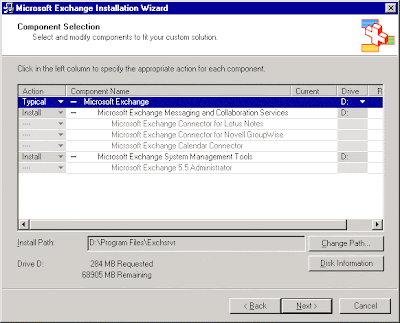Assembling the 2005.05.14 standard workstation
The instructions below are for the 2004.10.10 standard workstation.
The 2005.05.14 standard workstation has the following changes:
The UATA hard drive (and cable) have been replaced by a SATA hard drive (cable included with the motherboard). Effects on assembly: the hard drive uses a different cable from the one shown below, and plugs into a different spot on the motherboard.
The Zalman fan has been replaced by a three-speed Antec fan with a 4-pin power connector. Effects on assembly: the fan plugs into main power instead of the motherboard; the power-supply fan plugs into the motherboard.
The video card and DVD-ROM drive are different. Effects on assembly: none, but slightly different pictures.
The 2005.08.23 standard workstation has more changes. There turns out to be a serious bug in the motherboard BIOS in the 2005.08.23 workstation, and fixing that bug requires the following extra steps once the computer has beeped:
On a working computer, download the file A8V-ASUS-0213.ROM from the Asus A8V download page. This file has MD5 checksum 9c44e207cb3e37a6dc797aa6e1b99f5e.
On a working computer, rename the file as A8VB.ROM and burn that file to a CD.
On the standard workstation, as soon as the initial boot screen appears, press Alt-F2 to enter the BIOS EZ Flash utility, and then insert the CD. The EZ Flash utility will read A8VB.ROM from CD, erase the system's BIOS, and copy A8VB.ROM to the system's BIOS; don't turn the computer off while this is happening!
After reboot, don't worry about the bad-checksum message; simply press F2 to continue.
Other changes in the 2005.08.23 standard workstation are not reflected here yet.
Assembling the 2004.10.10 standard workstation
The 2004.10.10 standard workstation is a very nice x86 (Intel-compatible) computer: solid, extremely fast, and reasonably inexpensive. I have a separate page explaining how to buy the components of the standard workstation. This page explains how to assemble those components into a working computer.
Some of these instructions, and most of the pictures, are specific to the 2004.10.10 standard workstation. If you're using any different components, you'll have to figure out appropriate modifications to the instructions.
Unpack the computer case. Discard its plastic wrap. Put on an antistatic wrist strap, and attach it to ground (for example, to the screw on a typical light-switch plate).
Unscrew the big screws on the back of the case. Pull on the side latch to open the case. Take the power cord and the brown box out of the case. Open the brown box to find a bag of screws and brass standoffs:














